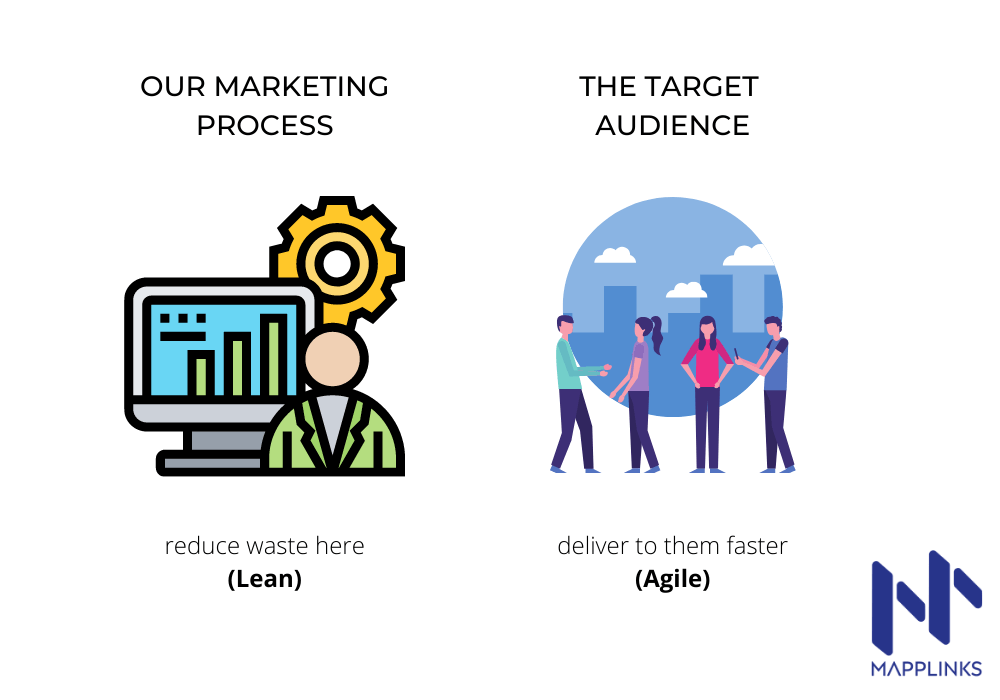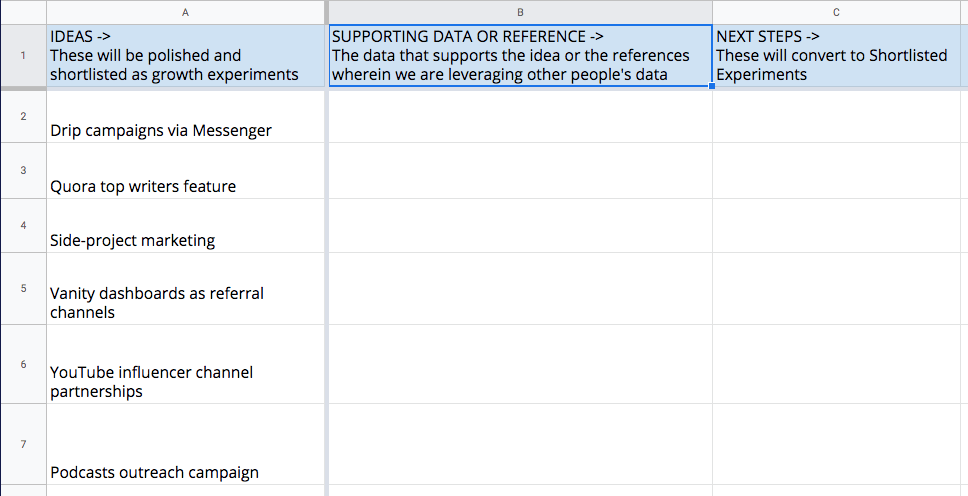Chapter 13: Think Agile & Lean
The lean mindset will give you a systems view of things and eliminate waste while the agile mindset will make you execute in shorter cycles to deliver more value faster. Both of these are complementary mindsets and hence clubbed together as one.
With the lean mindset, we take a systems view of things and focus on eliminating waste from our growth marketing experiments, and with the agile mindset, we focus on delivering more value to our target audience faster by executing our marketing experiments in shorter cycles.

How to build this mindset:
- Start looking at everything as a system and find opportunities to eliminate waste to build the lean mindset.
- Start ideating small implementations to deliver the most value in a shorter time to build an agile mindset.
Both of these are complementary mindsets and hence often clubbed together as one when we discuss the mindsets required for a growth marketer.
Now that you understand both lean and agile, and also the major difference between both these principles, let’s deep dive into more specific differences that’ll make it clear how you can apply these principles to your growth marketing experiments and process.
While the title of the post mentioned the ‘Differences between lean and agile’, I want you to think of these principles as best friends in how they can improve our campaigns. So, now we’re going to shift our way of thinking and see how they work together so well:
How lean and agile complement each other
- While lean focuses on the marketing process, agile also includes the end-user.
- Lean helps us reduce waste within our marketing system, agile helps us reduce uncertainty by testing delivery faster.
- Lean helps us cut costs of the system itself, and with agile, we can avoid costs by avoiding heavy budgets before testing the market.
- You can use lean to reduce waste in a campaign you’re already working on for a long time, while you should use agile to try new experiments you haven’t tested before.
- Lean focuses on improving the system as a whole and agile focuses on letting the target audience decide how the execution should progress.
Those are the key ways in which both principles differ. Now, since we’re growth marketers, we must get our hands dirty to really understand what’s happening here!
So let’s consider a real business situation and a growth marketing experiment and apply both lean and agile to this marketing experiment together.
Lean and Agile In A Real Marketing Example
You are a growth marketer. You’ve got a new client for growth consulting. Your client is a SaaS company that lets their customers invest in big real estate deals by investing very small amounts – like a Kickstarter for real estate.
Here’s what you do:
You ideate an experiment where you’d build a marketing funnel that’ll generate traffic via Facebook Ads to a landing page, register the leads to an automated email drip campaign explaining the real estate market and how micro-investing can get big property deals to anyone including college students, and then you will call them to sell them your investment plan.
How to apply ‘agile’ to this real marketing situation
You realize while you can set up the landing page pretty quickly by using a proven template that has worked for you before, but creating the 7 email drip sequence might take a long time.
So you decide to set up the ads and landing page, and the first 2 emailers of the sequence and test run it with a small budget of $10 on Facebook. Now, you will have data from 100 people if they really click through and sign up and open your first 2 emails.
And as they sign up, you can even start adding the next emails to your sequence before they get to the 2nd one as now you’ll have already tested the offer by delivering it to your audience faster.
Congratulations – You just applied agile principles to your growth marketing successfully. And you can do this for all your growth marketing experiments. I take the example of Ad funnels as most of you will understand it easily.
You can also start to see how agile in software development works and how we apply it to marketing in the above example.
How to apply ‘lean’ to this real marketing situation
Your agile marketing experiment was a success! You’re now getting a lot of leads from the email drip and your sales team is calling the leads. Like any sales funnel, a few people are interested in your offer out of all the calls, and this is what a funnel should be like.
However, your sales team is also your account management team and now, they have less time to call the actual customers. This means you add a few more people to the team to increase the call volume.
But wait! Then, you meet Mr. Lean!
So you “think lean” and come up with a better solution: You apply the soft sell and the hard sell within the email drip sequence that’s already going out to the leads. And you keep only the final follow up conversation for the call.
Since the audience is already engaged with your funnel, you set up rules to send the sales pitch to those you’ve opened your emails, you sit back and relax!
Congratulations – You just applied lean to eliminate waste, save resources, and cut costs in this campaign (system).
So that’s how you really apply agile and lean to your marketing and how both principles differ and also complement each other so well.



